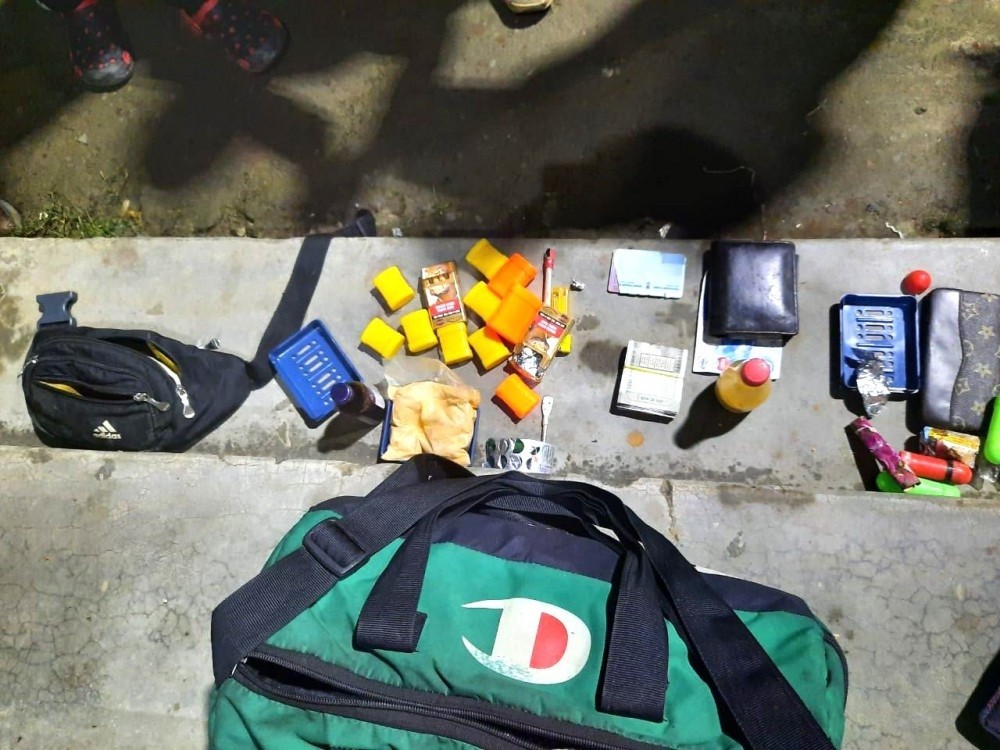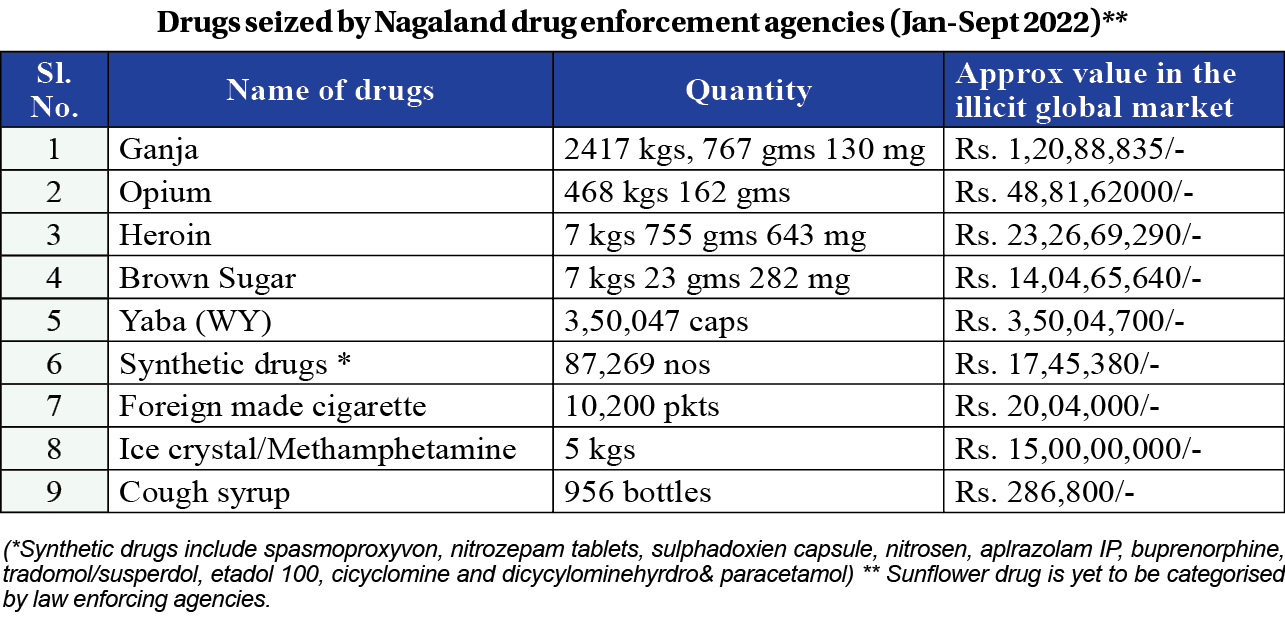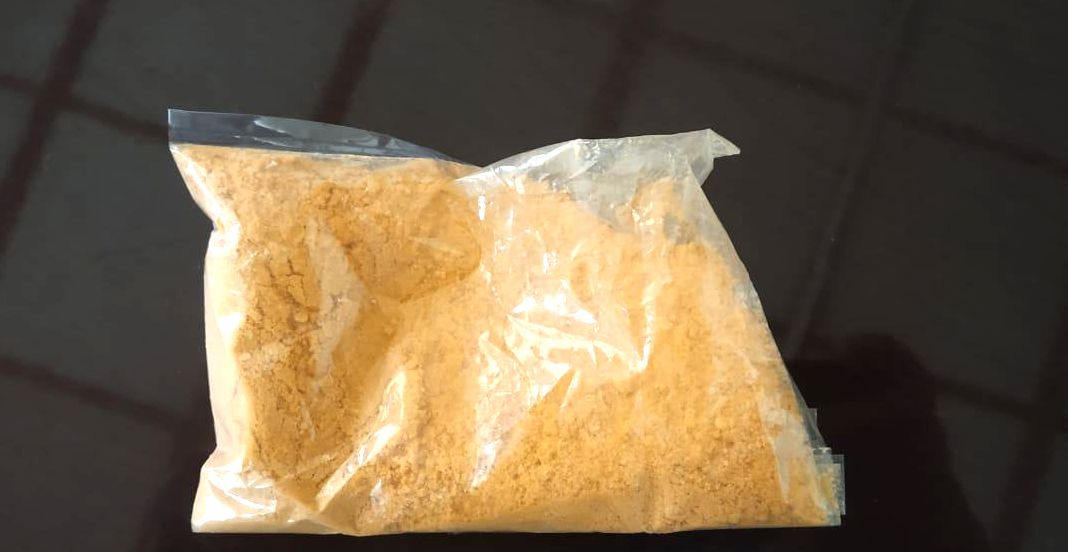Resurgence of drug use in Nagaland attributed to enigmatic ‘sunflower’

A packet of ‘Sunflower’ drug displayed as an exhibit by a law enforcement agency. (Morung Photo)
‘Without intervention, state could face demographic gap,’ say experts
Atono Tsükrü Kense
Kohima | November 23
Substance abuse, among others, is turning out to be an emerging and major social concern, especially among young adolescents in Nagaland today. By all indications, drug use is making resurgence, attributed to an enigmatic yet clearly felt ‘Sunflower’ drug. Word on the street has it that theft and burglary have increased. Theft or lost of routine household items like LPG cylinders and even poultry have reportedly increased in frequency, which have been linked to drug-users financing their habits. This has, in turn, given way to villages and neighbourhoods enhancing community vigil, or in other words, reacting vigilante-style.
Experts on the issue have expressed apprehension that the current trend could trigger a scenario reminiscent of the eighties when Nagaland was in the grips of a never before seen drug culture among the youths.
A Police Officer, commenting on the current scenario, anonymously, said, “We are anticipating, monitoring and making seizures. Still,I am afraid, the menace has just begun.”Going by the present, though largely undocumented trend, he expressed apprehension that a few years from today, Nagaland might well feel a demographic gap.
When did it all start?
There is no definitive evidence to pinpoint a timeline. But according to Ketholelie Angami, President of ARK Foundation,the so called‘sunflower’ drug made entry to the state around the time before the COVID-19 pandemic started.
Kripa Foundation Director, Abou Mere noted that when the drugs first made an entry into the state, it was the “old timers,” who took to it. In due course, it permeated down to a younger demographic.
A concern for edu institutes
A teacher of a higher secondary school in Chümoukedima commented, “We know they are using.” The symptoms, she observed, included increased inattention and tendency to fall asleep during class hours. She said, “They don’t pay attention in the class as they are mostly drowsy and some of them would be sleeping.”
As told by the teacher, one of the students confessed to using the drug during a counselling session after which, the parents were immediately informed.
Another teacher narrated how during “surprise checking” of students in the school, the drug was found packed in tobacco containers.“We are very concernedof their well-being but we are at a loss as to how to deal with them,” the teacher said, while admitting that, besides surprise checks and counselling, the teachers are helpless as far as effective intervention is concerned.
Intervention required
On the scenario as observed currently, the ARK Foundation President said that that drug abuse or users are multiplying on the ground but are virtually invisible to the society at large. He attributed this to present day technology “where communications have become easy unlike those days when users (visibly) loitered on the streets.”
Terming the present generation of drug-users as “hidden and unreached population”, Angami noted, “This is the reason why the society tends to ignore the ground reality.”On the contrary, he asserted the need for immediate intervention.“As they have recently picked up this habit, it’s the right time to intervene before they become full-fledged dependent on drugs.”
Kripa Foundation Director, Abou Mere viewed that substance abuse is not just an individual problem but a socio-economic, socio-political and human rights issue.
“Holistic approach and appropriate strategies need to be developed and implemented towards prevention, treatment and social reintegration,” Mere said. However, he reminded that currently, there exists no framework for intervention due to the delay in the implementation of the Nagaland State Substance Abuse, Prevention and Treatment Policy, 2016.
Drugs seizure
Furthermore,drug abuse has not been confined to the civilian population alone. Recently, on September 27, the Lhisemia Youth Organisation (LYO) apprehended 25 individuals, who were allegedly consuming and peddling drugs.The trail also led to two police personnel, who were allegedly caught red-handed, selling drugs to youths.
The LYO filed FIR in this connection,which the Superintendent of Kohima confirmed. As per the SP,the two unnamed police personnel were placed under suspension.
Meanwhile, official records point to the state police registering 315 cases and arresting 404 persons in connection to drug-related offences from January to September 2022. (See table for drug seizures)








